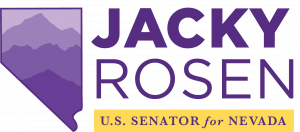WASHINGTON, D.C. – Today, during a hearing in the Senate Committee on Commerce, Science, and Transportation, U.S. Senator Jacky Rosen (D-NV) questioned the Honorable John D. Porcari, former Deputy Secretary of Transportation and Managing partner of 3P Enterprises, about Nevada’s infrastructure projects and funding, including Interstate-11 and other investments that can help revive travel and tourism in the state. The Senator asked about the importance of investing in transportation innovations, such as the Hyperloop in Las Vegas. A transcript of the Senator’s full exchange can be found below, and a video of the Senator’s full exchange can be found here.
ROSEN: Thank you, Chair Cantwell, and thank you to the witnesses for being here today. I really appreciate it. I want to talk a little bit about our national strategy on travel and tourism infrastructure. Tourism, of course, is essential to Nevada’s economy as well as the entire nation’s. It is a comprehensive infrastructure plan that incorporates intermodal transportation to facilitate travel and tourism mobility.
The National Advisory Committee on Travel and Tourism Infrastructure drafted its 2020 report during a healthy and robust economy before the public health crisis of COVID-19 happened. Of course, Nevada’s tourism grinded to a screeching halt. It cost us hundreds of thousands of jobs. Over a year later, a national strategy on travel and tourism is needed more than ever to bring the industry back to pre-pandemic strength, and this means identifying strategic infrastructure investments that will enable our tourism economy to thrive in the future.
As the Chair of the Subcommittee on Tourism, Trade, and Export Promotion, I am looking forward to working with the Administration, the committee, and all of the witnesses to help make that happen. So, of course, we have to have a broad view of infrastructure, including a new Interstate-11 connecting Phoenix to Las Vegas to Reno. That’s going to helping the tourism in three of our major metropolitan areas.
So Mr. Porcari, as the Former Deputy Secretary of Transportation, can you talk about the importance of a national strategy on travel and tourism and how surface transportation infrastructure investments can be part of that, especially as we recover from the economic downturn as a result of the pandemic?
PORCARI: It’s a great question, Senator Rosen. Clearly, a national strategy, as I referred to before using a systems approach. How we actually build and maintain infrastructure would be really helpful. In the Nevada example of travel and tourism, making sure we are multi-modal. You mentioned interstate-11 certainly that there is also a private sector passenger rail proposal that would directly serve the tourism and hospitality industry and air service and all of those are key elements of the strategy that ultimately have to work together to promote travel and tourism. The beauty of the system is that we can do that, and it cuts across committees of jurisdiction and certainly funding lines. A larger integrated strategy would benefit everyone.
ROSEN: Thank you, I want to build upon that about infrastructure future and infrastructure technology initiatives. In Nevada, we have our Las Vegas Convention Center, and of course, we have a highly innovative project going on called Our Convention Center Loop. It is a revolutionary underground transportation system that will serve the entire 200-acre Las Vegas Convention Center campus, allowing convention attendees to be transported across the campus in just over one minute, free of charge, in all-electric Tesla vehicles.
I have a short time left, but Mr.Porcari, this is new and innovative work; how can Congress bring transportation innovations to the forefront to help us start moving again like the kind of things we are doing at our convention center?
PORCARI: The Convention Center loop project is a great example of one that doesn’t fit neatly into any of the existing funding categories yet is an incredibly important pilot project that could be replicated nationally. The kind of flexibility in federal funding for innovation, as I mentioned before that project decisions are made at the local level. Those individual decisions should be supported through pilot projects that are fairly high-risk rewards to prove the technology and show that it can part of an integrated system.
ROSEN: I want to move to another topic, predictive analytics, and transportation. We know how much data we collect, and we know that data tells a story. Our regional transportation commission has been on the forefront of using predictive analytics to improve highway safety and efficiency. We can anticipate where congestion spots are and we can modify transportation patterns in advance. So Mr. Porcari can you speak to how predictive analytics, how we can use that, how’s it supported, and how this technology can help us reduce crashes, increase roadway capacity and reduce emissions for fuel and waste all at the same time?
PORCARI: Yes, Senator Nevada has been really aggressive and a leader in predictive analytics. The explosion of available technology for analytics is incredible. Whether it’s traffic congestion, spot safety issues, or the vehicles themselves were the analytics can support better decision-making in routing just in time. What we have not done as a country is maximize our opportunity with predictive analytics. As you know, there is a research program at DOT where some of this in terms of pilot projects would be a very useful expansion of funds to build national leadership on a more holistic predictive analytic system.
ROSEN: Well, thank you.
###

